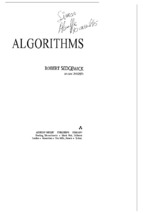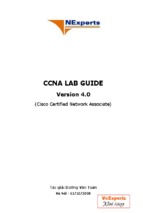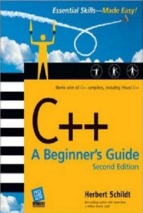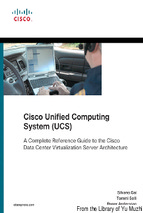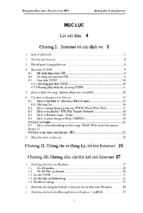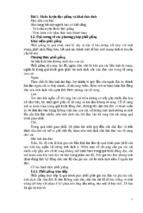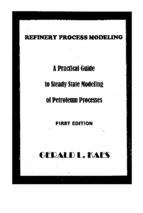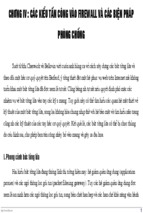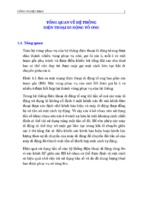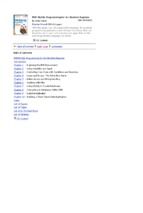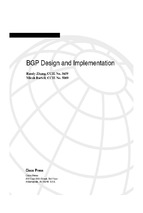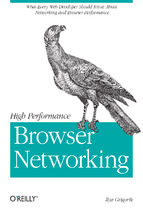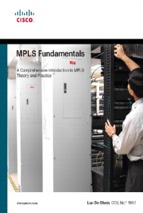The price advantage (WALTER L. BAKER MICHAEL V. MARN CRAIG C. ZAWADA)
The Price
Advantage
Founded in 1807, John Wiley & Sons is the oldest independent publishing company in the United States. With offices in North America, Europe,
Australia, and Asia, Wiley is globally committed to developing and marketing print and electronic products and services for our customers’ professional
and personal knowledge and understanding.
The Wiley Finance series contains books written specifically for finance
and investment professionals as well as sophisticated individual investors
and their financial advisors. Book topics range from portfolio management
to e-commerce, risk management, financial engineering, valuation, and financial instrument analysis, as well as much more.
For a list of available titles, visit our Web site at www.WileyFinance.com.
The Price
Advantage
Second Edition
WALTER L. BAKER
MICHAEL V. MARN
CRAIG C. ZAWADA
John Wiley & Sons, Inc.
C 2010 by McKinsey & Company, Inc. All rights reserved.
Copyright �
Published by John Wiley & Sons, Inc., Hoboken, New Jersey.
Published simultaneously in Canada.
No part of this publication may be reproduced, stored in a retrieval system, or transmitted in
any form or by any means, electronic, mechanical, photocopying, recording, scanning, or
otherwise, except as permitted under Section 107 or 108 of the 1976 United States Copyright
Act, without either the prior written permission of the Publisher, or authorization through
payment of the appropriate per-copy fee to the Copyright Clearance Center, Inc., 222
Rosewood Drive, Danvers, MA 01923, (978) 750-8400, fax (978) 750-4470, or on the web
at www.copyright.com. Requests to the Publisher for permission should be addressed to the
Permissions Department, John Wiley & Sons, Inc., 111 River Street, Hoboken, NJ 07030,
(201) 748-6011, fax (201) 748-6008, or online at http://www.wiley.com/go/permissions.
Limit of Liability/Disclaimer of Warranty: While the publisher and author have used their
best efforts in preparing this book, they make no representations or warranties with respect to
the accuracy or completeness of the contents of this book and specifically disclaim any implied
warranties of merchantability or fitness for a particular purpose. No warranty may be created
or extended by sales representatives or written sales materials. The advice and strategies
contained herein may not be suitable for your situation. You should consult with a
professional where appropriate. Neither the publisher nor author shall be liable for any loss of
profit or any other commercial damages, including but not limited to special, incidental,
consequential, or other damages.
For general information on our other products and services or for technical support, please
contact our Customer Care Department within the United States at (800) 762-2974, outside
the United States at (317) 572-3993 or fax (317) 572-4002.
Wiley also publishes its books in a variety of electronic formats. Some content that appears in
print may not be available in electronic books. For more information about Wiley products,
visit our web site at www.wiley.com.
ISBN 978-0-470-48177-6
Printed in the United States of America
10 9 8 7 6 5 4 3 2 1
For
Ashley, Nancy, and Gail
Contents
Preface
xiii
Acknowledgments
xvii
PART ONE
Pricing Fundamentals
CHAPTER 1
Introduction
The Power of 1 Percent
The Price/Volume Tradeoff
Market Forces Add Pressure
The Nobility of Pricing Excellence
Why the Price Advantage Is So Rare
CHAPTER 2
Components of Pricing Excellence
An Integrated Approach
An Interdependent Hierarchy
Applying to Your Company—Pinpointing the Opportunity
1
3
3
6
7
10
10
13
15
18
19
PART TWO
Exploring the Levels
CHAPTER 3
Transactions
The Pocket Price Waterfall
The Pocket Price Band
The Soundco Radio Company Case
Pocket Margin Waterfall and Band
Alen Glass Company Case
23
25
26
29
32
39
40
vii
viii
CONTENTS
CHAPTER 4
Customer Value
Mapping Value
Creating a Value Map
Making Moves on the Value Map
Putting Customers on the Value Map
Value Profiling
CHAPTER 5
Market Strategy
Profiting from Better Price Predictions
Planning for an Expected Price Change
Maintaining Optimal Production and Capacity
Improving Pricing Conduct
Influencing the Elements of Pricing Conduct
A Word on Followership
CHAPTER 6
Pricing Infrastructure
Processes—What Are the Most Critical Types of
Pricing Decisions for Your Business?
Organization—Who Is Running the Pricing
Profit Center?
Performance Management—How Should We
Recognize and Reward Pricing Performance?
Systems and Tools—No Magic Bullet Exists
45
46
46
57
67
69
75
77
78
79
80
82
89
93
95
99
103
107
PART THREE
Unique Events
CHAPTER 7
Postmerger Pricing
A Temporary Window of Opportunity
Tremendous Opportunities at Each
Pricing Level
Avoiding Common Postmerger Traps
Antitrust Laws
113
115
116
119
127
130
Contents
CHAPTER 8
Price Wars
Why Price Wars Should Be Avoided
What Really Causes Price Wars
Staying Out of Price Wars
Getting Out of Price Wars
When a Price War Might Make Sense
ix
133
133
136
141
144
145
PART FOUR
Expanding the Boundaries
CHAPTER 9
Legal Degrees of Freedom
Pricing Decisions That Raise Red Flags
Minimizing Risks While Meeting Pricing Objectives
Calling in the Attorneys
CHAPTER 10
Lifecycle Pricing
What Makes Lifecycle Pricing Tough
The Three Phases of Product Lifecycle Pricing
Sustaining Returns Across the Lifecycle
CHAPTER 11
Pricing Architecture
Managing Price Perception
Influencing Customer Behavior
Price Architecture Based on Supplier Role
149
151
153
156
162
165
166
168
179
183
183
185
191
PART FIVE
Advanced Topics
CHAPTER 12
Complexity Management
Section One: Custom-Configured Products
Section Two: High-Count Product Lines
Section Three: Distributed Sales Models
197
199
199
207
212
x
CONTENTS
CHAPTER 13
Tailored Value
Section One: Price Segmentation
Section Two: Tiered Products and Services
Section Three: New Products
Section Four: “Razor/Razor Blades” Offerings
Section Five: Solutions
CHAPTER 14
Software and Information Products
Unique Characteristics That Impact Pricing
Exploring the Elements of Pricing
221
221
226
230
236
240
247
247
250
PART SIX
Making Change Happen
CHAPTER 15
Pricing Transformation
Designing a Clear Change Program
Accelerating and Embedding Change
CHAPTER 16
The Monnarch Battery Case
The Monnarch Battery Company
Transactions
Customer Value
Market Strategy
Capturing the Monnarch Pricing Opportunity
Hard-Wiring the Change
265
267
268
276
287
287
289
293
296
298
302
Epilogue
305
APPENDIX 1
Pocket Price and Pocket Margin Waterfalls
307
Contents
APPENDIX 2
Antitrust Issues
xi
327
U.S. Pricing Law
EU Pricing Law
Antitrust Information Sources
327
335
342
APPENDIX 3
List of Acronyms and Abbreviations
353
APPENDIX 4
About the Web-Based Tool: Periscope
355
About the Authors
357
Index
359
Preface
s we approached the task of writing this second edition of The Price
Advantage, we revisited a few basic questions—questions that our readers might have as well. Why a book on pricing? Why a book by McKinsey
& Company? And finally, why a second edition now? Let us begin by
addressing these basic questions.
A
WHY A BOOK ON PRICING?
Pricing, although one of the most critical management functions, remains
one of the most misunderstood and undermanaged functions at many companies that are otherwise high performers. Pricing is far and away the most
sensitive profit lever that managers can influence. Small changes in average
price translate into huge changes in operating profit.
Although more companies have made gains in pricing in recent years, too
few businesses have successfully tapped into the full potential that improved
pricing holds. Even thoughtful general managers often feel helpless to make
real progress on the pricing front. Many managers do not know where to
begin to get a handle on identifying the exciting performance upside that
pricing so often holds. And those who identify this upside struggle to really
capture and sustain it.
This book is not designed to be an exhaustive review of the considerable body of pricing theory that has accumulated over the years. To the
contrary, it has been written as a practical pricing guide for that thoughtful general manager who has been tempted by the unrealized promise of
improved pricing and, perhaps, frustrated by attempts to translate pricing
theory into bottom-line impact for his or her business. It is intended to
provide a logical and structured approach for identifying where the most
precious sources of untapped pricing opportunity reside in a business, along
with practical, case-illustrated guidance on how to capture and sustain that
opportunity.
xiii
xiv
PREFACE
WHY A BOOK BY MCKINSEY ON PRICING?
Over the past 20 years, pricing has become one of the most frequent areas
in which we have helped businesses across every continent (except Antarctica!) to improve their performance. These companies represent a rich and
diverse range of industries, including industrial goods, consumer packaged
goods, consumer durables, banking, telecommunications, chemicals, retailing, high-tech products, basic materials, insurance, pharmaceuticals, and
transportation. To support our service to clients, McKinsey has invested
more than $25 million in developing practical knowledge in pricing over the
past five years alone. We are credited with having developed and advanced a
majority of the most useful contemporary pricing frameworks—the pocket
price waterfall and the value map are just two examples.
WHY A SECOND EDITION NOW?
Since the first edition of The Price Advantage was published five years ago,
much has changed. First, our knowledge has advanced significantly in a
number of areas—areas of growing currency and relevance that were not
included in the original edition. A new chapter is devoted to the topic of
managing price wisely over the course of a product’s lifecycle. In an evergrowing number of product categories, for example, high-tech products,
consumer durables, and medical devices, product lifecycles are compressing,
which makes this a topic of broad application and significance.
Included in this edition is an entirely new part titled “Advanced Topics,”
which were not covered in depth in the first edition. This includes Chapter 12, “Complexity Management,” which addresses issues that complicate
the pricing challenge, including the complexity of pricing custom-configured
products, pricing when the number of individual products sold is extremely
high, and pricing through a large and distributed sales force. Chapter 13,
“Tailored Value,” explores issues around tailoring value to specific customers and markets, including segmenting price, pricing product line tiers,
dealing with “razor/razor blades” offerings, and pricing new products and
integrated solutions. Chapters 12 and 13 contain sections of information
that do not apply to each and every business; but when they do apply, we
have found that they are often central to a company’s realization of the price
advantage. Chapter 14 “Software and Information Products,” is also new
and discusses how to tackle the unique challenges of pricing software and
information-based products.
Preface
xv
Second, the legal landscape has also continued to evolve since we wrote
the first edition. The United States’ pricing rules have evolved and enforcement has been generally more aggressive. EU pricing law and enforcement
has moved closer to and, in some cases, surpassed that of the United States
in severity. Likewise, pricing and antitrust law in many Asia-Pacific countries is gradually becoming more strictly defined and aggressively enforced.
Chapter 9, “Legal Degrees of Freedom,” has been updated to reflect the
changing degrees of legal freedom that companies must operate within today. Furthermore, we have updated language throughout this second edition
to avoid pricing wording and phrasing that might be more likely to raise
legal red flags in the current legal environment.
Finally, we have heard from businesses around the world asking for
more details on how to build a sustainable capability in pricing; that is,
what does a high-performing pricing infrastructure look like today and
how do you best move an organization in that direction. Our overarching
framework, “The Three Levels of Price Management” from the first edition,
has been extended to include a cross-cutting pricing infrastructure level;
Chapter 6, “Pricing Infrastructure,” is completely new and dedicated to
issues of pricing infrastructure—where we have synthesized our experience
in helping companies build high-performing organizations, processes, and
tools. So, as we mentioned above, much has changed since we published
the first edition back in 2004—so much that we deemed the writing of the
second edition of The Price Advantage timely and warranted.
STRUCTURE OF THE BOOK
This book is organized into six main sections. Part One describes the price
advantage and explains why it is worthwhile for businesses to pursue that
rare but valuable advantage. It then lays out our overarching framework for
identifying and ultimately capturing pricing opportunity. This framework,
the three levels of price management plus pricing infrastructure, provides
the integrating thread that weaves through the book and is applicable to
most business situations.
Part Two explores each of these three levels plus pricing infrastructure
in considerable detail. Part Three addresses unique pricing events that almost any company might have to face on an occasional basis. Part Four
explores some of the boundaries of the price advantage—boundaries that
may affect a company’s degrees of pricing freedom and boundaries that
companies can expand to find opportunities beyond the fundamentals covered in Parts One and Two. Part Five covers a variety of advanced topics,
xvi
PREFACE
as mentioned earlier. Part Six is devoted to the practical enablers and constraints to making enduring and positive pricing change happen, including
a detailed case study and some final thoughts. In addition, the Appendixes
are designed to provide some useful examples of the application of core
frameworks discussed in the book, an overview of key points in pricing
law, a list of acronyms and abbreviations, and instructions for accessing a
functional demo of Periscope, a web-based pricing tool that has been loaded
with realistic transaction data for a hypothetical company. This book contains a number of disguised cases to illustrate pricing concepts, frameworks,
and insights. These cases are rooted in McKinsey’s extensive client work
in pricing, and client identities are heavily disguised to assure protection
of confidential client information and strategies. The location and nature
of opportunities identified are consistent with the underlying cases, and the
magnitude of improvements shown by these examples is real.
Unless otherwise noted, when we talk about a company’s “product,” we
are referring to that company’s comprehensive product, service, and support
offering to customers. This convention allows for more economical word
usage throughout the book.
Acknowledgments
s we embark on this journey for a second time, we do so with a full
understanding and appreciation of the level of support it takes to write a
book. As with the first edition, our colleagues, our clients, our firm, and our
families continue to support us in extraordinary ways. To them we extend
a hearty thank you in the hope it captures our true appreciation for what
they have contributed.
We start our acknowledgments with the “godfathers” of pricing. Those
that saw the power of pricing before the rest and persisted in sharing the
story—Kent B. Monroe, Tom Nagle, Dan Nimer, and Arleigh Walker. And
to the leaders at McKinsey & Company who supported and invested in the
development of our pricing knowledge—David Court, Tom French, Marc
Singer, Robert Garda, Philip Hawk, Ralf Leszinski, Andrew Parsons, Hajo
Riesenbeck, and Rob Rosiello—thank you for believing in us and the impact
we could have for our clients. We also want to recognize the tremendous
support of Eric Roegner, an author on the first edition. Eric’s ideas and
contributions remain at the foundation of this edition.
There are some special people who accompanied us on this journey and
we would like to take the time to recognize them. Cheri Eyink served as
our undaunted project manager. Beyond driving the process of creating this
second edition with resolve and enthusiasm, she acted as an irreplaceable
thought partner to the authors—adding content, insight, and clarity at every
turn. Sarah Smith was our trusted editor—pushing us to express in written
word the knowledge we had gathered over many years of serving clients. She
gracefully and persistently challenged us to share our best with our readers
in a clear and concise manner. To them both, we are grateful.
A number of past and current McKinsey colleagues contributed their
deep content expertise to this book, including John Abele (postmerger
pricing), Scott Andre and Robert Musslewhite (market strategy), Daniel
G. Doster (solutions pricing), Dieter Kiewell (pricing tools and implementation), Andy Kincheloe (lifecycle pricing), Stephen Moss (pricing
infrastructure), Adolfo Villagomez (market strategy), and John Voyzey
(price wars). Special thanks to Gene Zelek, partner and chair of the
Antitrust and Trade Regulation Practice Group at Freeborn & Peters LLP
A
xvii
xviii
ACKNOWLEDGMENTS
in Chicago (legal issues). In addition, we would like to thank current
and past McKinsey colleagues who made significant contributions to the
knowledge we shared here: Kevin Bright, Hugh Courtney, Gareth Davis,
Tom Dohrmann, David Dvorin, Jonathan Ford, Amit Jhawar, Kristine
Kelly, Michal Kisilevitz, Eric Kutcher, Eric Lin, Glenn Mercer, Jamie
Moffitt, Derick Prelle, David Rosenberg, David Sackin, Mike Sherman,
Philippe Stubbe, and Florian Wunderlich. Thanks also to George Gordon,
partner and co-chair of the Antitrust/Competition Group at Dechert LLP
in Philadelphia and Lynda Martin Alegi, of Counsel in Baker & McKenzie
LLP’s EC Competition and Trade Unit based in London.
We would also like to take this opportunity to thank the editing and
publishing experts at the McKinsey Quarterly, past and present, including
Don Bergh, Stuart Flack, Allan Gold, Rik Kirkland, and Allen Webb, as well
as those at John Wiley & Sons, including Bill Falloon and his team.
Mary Turchon spent countless hours taking care of all of the details
required to publish a book. Creating exhibits, scheduling meetings, formatting text; the list could fill pages. Her excellent skills and willingness to
help out in a crunch are deeply valued. We would also like to recognize the
research assistance provided by Danica Reed and the graphics support of
Janet Clifford and Mary Ann Brej.
We close with recognition and appreciation for the hundreds of
McKinsey & Company consultants that have worked alongside us over
the past 30 years, expanding our knowledge and bringing the power of pricing to thousands of companies. And to our clients, who opened the door to
their businesses and allowed us to be a part of their transformations.
The Price Advantage, Second Edition
by Walter L. Baker, Michael V. Marn and Craig C. Zawada
Copyright © 2010 McKinsey & Company, Inc.
PART
One
Pricing Fundamentals
art One describes what the price advantage is and explains why this
is such a worthwhile and profitable advantage to pursue. This part
also introduces an overarching framework for identifying the magnitude
and location of pricing opportunities—and for sustainably capturing those
opportunities.
P
1
The Price Advantage, Second Edition
by Walter L. Baker, Michael V. Marn and Craig C. Zawada
Copyright © 2010 McKinsey & Company, Inc.
CHAPTER
1
Introduction
hat’s your advantage? What capabilities distinguish your company most
from its peers, allow your business to perform better than your competitors, provide the foundation for superior returns to your shareholders? Is it
a cost advantage—do you purchase better and manufacture more efficiently
than your competition? Is it a distribution advantage—are your products
sold through the best wholesalers, retailers, and locations in your markets?
Is it a technology advantage or an innovation advantage? Or is yours a brand
advantage or a capital structure advantage or a service advantage?
For all of the advantages that businesses pursue, there is one powerful
advantage that is accessible to virtually every business, but actually pursued
by too few—and ultimately achieved by even fewer. That advantage is the
price advantage.
Setting prices for goods and services is one of the most fundamental
management disciplines. It is, in truth, unavoidable. Every product and
service sold since the beginning of time has had a price assigned to it. Setting
that price is among the most crucial, most profit-sensitive decisions that
companies make. Ironically, very few companies price well. For a host of
reasons, few ever develop anything resembling a superior, business-wide,
core capability in pricing. In other words, few companies build pricing into
the distinctive business advantage that it can be.
In this book, we discuss the details of creating and sustaining the price
advantage, where pricing excellence generates superior returns to shareholders and enables a company to invest in sustaining its advantages in other
areas. But first, let us look at why getting pricing right is so important, and
why so few companies realize this advantage.
W
THE POWER OF 1 PERCENT
Why is it so vital to get pricing right? Because pricing right is the fastest and
most effective way to grow profits. The right price will boost profits faster
3
4
PRICING FUNDAMENTALS
Exhibit 1-1 Average Economics—Global 1200
101.0
12.5
Increase
price by
1%
Percent
11.5
Profit
increase
of 8.7%
68.0
100.0
20.5
Price
Fixed
cost
Variable Operating
cost
profit
Based on Global 1200 5-year trailing average economics
than increasing volume; the wrong price can shrink profit just as quickly. The
exhibit above illustrates this dramatically. In Exhibit 1-1, the average income
statement of the Global 1200 (an aggregation of 1,200 large, publically held
companies from around the world), shows just how quickly the right price
can create profit. We use a five-year average to reduce sensitivity to yearly
economic variations.
Starting with price indexed to 100, we see that fixed costs (items
like overhead, property, and depreciation that do not vary when volume
changes) amount to an indexed average of 20.5 percent of price. Variable
costs (expenses like labor and materials that shift in tandem with volume)
account for 68.0 percent. This leaves an average return on sales (ROS) of
11.5 percent.
Now, given these Global 1200 economics, what happens if you improve
your price by 1 percent? Price will rise from 100 to 101. Assuming volume
remains constant, then variable costs will remain constant as well—as will
fixed costs. Operating profit, however, rises from 11.5 percent to 12.5 percent, a relative increase of 8.7 percent.
The clear message is that very small improvements in price translate
into huge increases in operating profit. When you talk about creating a
pricing advantage, you may have to recalibrate your thinking about how
large a price increase needs to be to have a meaningful impact. Pricing
5
Introduction
Exhibit 1-2 Comparison of Profit Levers
Improve
by 1%
Operating profit improvement
8.7
Percent
Price
Variable cost
5.9
Volume
Fixed cost
2.8
1.8
Based on Global 1200 5-year trailing average economics
initiatives that increase average prices by only a quarter or a half percent are
important because they bring disproportionate increases in operating profit.
A 1 or 2 percent price improvement is a major victory with significant profit
implications. Find 3 percent—and many companies can, once they start
looking—and operating profit can jump by more than 25 percent, if your
cost structure is similar to the Global 1200 average.
Not only that, but pricing is far and away the most powerful profit
lever that a company can influence. Continuing with average Global 1200
economics, Exhibit 1-2 illustrates the impact on operating profit when individual levers improve by 1 percent while other factors stay constant. Pricing
has by far the strongest impact, raising profit by 8.7 percent.
Variable cost is the second most significant one, increasing operating
profit by 5.9 percent for every 1 percent decrease in costs. However, most
companies have already wrung a lot out of variable costs in recent years
through purchasing and supply management initiatives, labor productivity
improvements, and other measures. As a result, continued improvement in
variable cost structure has become increasingly difficult.
Fixed cost decreases have an even smaller effect on operating profit.
A 1 percent improvement generates only a 1.8 percent operating profit increase. While making other cost-cutting efforts, companies over the past
decade were also busy trimming fixed costs; as with variable costs, further
improvements have become elusive.
- Xem thêm -



